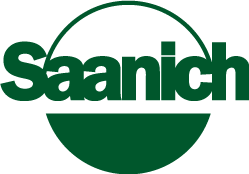The District of Saanich values community heritage. Our collection of heritage walking tours are provided to increase public awareness of our heritage and encourage residents and visitors to explore our neighborhoods.
Heritage Passports
Heritage Passports are a collaborative project of the District of Saanich; Arts, Culture, and Heritage Advisory Committee; and the Saanich Heritage Foundation.
This itinerary takes you through the Saanich Core local area. You’ll answer questions and read facts for each location where you'll see a number of buildings with heritage value. You might just learn something new!
Watch for more Heritage Passports in future for other local areas, as well as versions for Arts and Culture!
Gorge Road West Area
Gorge Road Tour One covers the area between Admirals Road and Colquitz Avenue.
Much of the Greater Victoria area is within the traditional territory of First Nations people who shared a common dialect of the North Straits Salish language that they called Lekwungen. These family groups are now represented by the Esquimalt and Songhees nations. Families lived in villages on these waterways and travelled seasonally to their fishing and hunting camps.
Archaeological evidence indicates that the land where the historic Craigflower Schoolhouse is now located was occupied by First Nations people long before the European settlers of the 1800s. An artefact found on the site, a crystal quartz micro blade, dates back 2,400 years. A village of the Sapsum people is referred to as Kosampsom in historical records.
Gorge Road Tour Two provides a guide between Adelaide Avenue and Inez Drive.
Land owners in the area, as recorded in the 1860s, were James Yates, John Lemon and Dr. John Kennedy. In 1867 a trail was cut through the woods (now Craigflower Rd.) then over the channel rapids and westward to the (Craigflower) school to give improved access to the farms and school. Robert Ker, originally from Scotland, and his wife Jessie purchased Dr. Kennedy’s land around 1871. He named the farm Ferniehurst. The two oldest boys of the Ker family would travel by canoe to go to school in town. Later they would attend Craigflower School.
Gordon Head Area
Torquay Tyndall tells the story of the Torquay and Tyndall area of Gordon Head.
The name Gordon Head referred to the rocky headland near what is now Vantreight Park northwest of Ferndale Road. This point was noted and named on a survey by Captain Kellet of the H.M. Herald in honour of Scottish Captain the Honourable Charles Gordon in 1846. Captain Charles Gordon was in the area in connection with defining the boundary between British and American territory.
Prospect Lake Area
Prospect Lake talks of the growth of the area and the families who settled there.
European Settlement of the Prospect Lake area began with pioneer farmers in the mid 1800s. Jack Durrance arrived in 1852 and paddled up Tod Inlet and Tod Creek to find good farmland. Other early European settlers included Frank Campbell, Horace Oldfield, Sam McCullough, Fred Duval and Tony Williams.
Prospect Lake soon became a popular area for fishing and hunting. An 1866 article from the Colonist newspaper describes the lake as being “thronged with anglers.” An 1888 Victoria Water Supply map shows that a dirt track named West Road (now Old West Saanich Road) provided access in the vicinity of the northern end of the lake. By 1895 people could access the lake by taking “the Victoria & Sidney Railroad to Beaver Lake station, and (then) an interesting tramp of two and a half miles to Prospect Lake.” Daily Colonist.
Tattersall Area
Tattersall and Quadra tells of the growth of the Quadra community.
Arthur Stewart (1870-1938) was a contractor and stone mason who built many homes in the Tattersall / Quadra area. He was one of British Columbia’s top stoneworkers. He came to Saanich from Scotland in the early 1900s and worked as a contractor on the Empress Hotel and the Cenotaph in Vancouver.
Arthur also founded the jitney, or bus service, in the Lakehill area that ran from Fort and Douglas Streets out to the Pumping Station on Quadra (3940 Quadra). He and his sons ran the service circa 1915 to 1925. Arthur and his wife Janet (nee Hector) lived for many years at 1250 Tattersall Drive.

